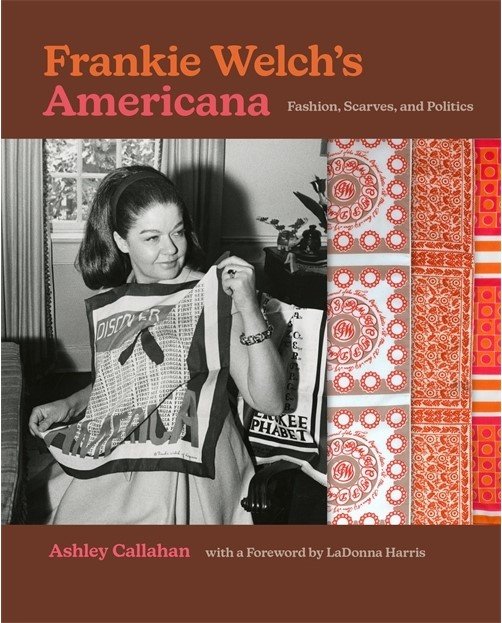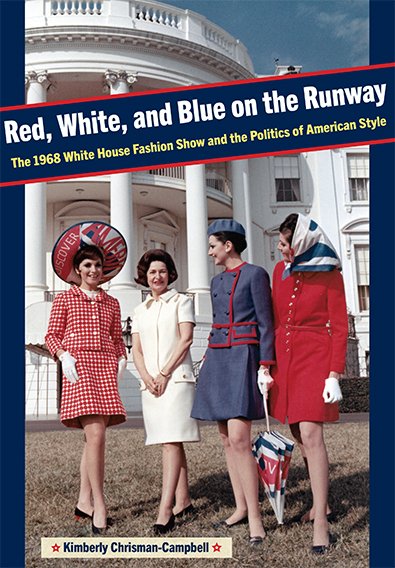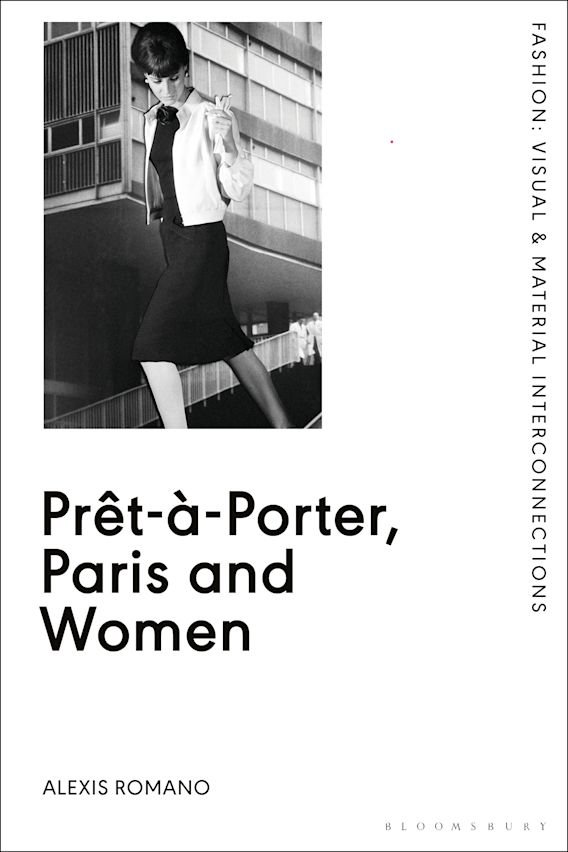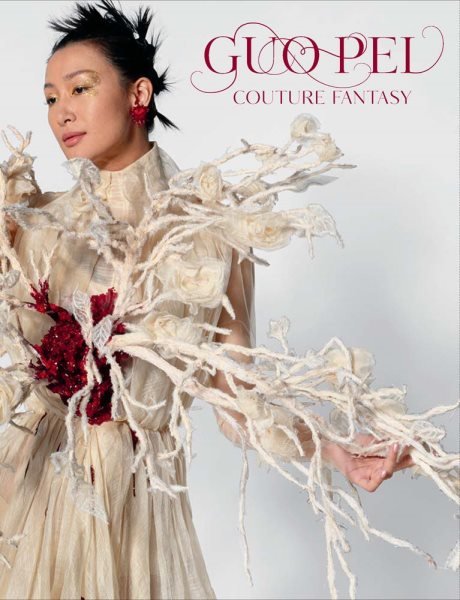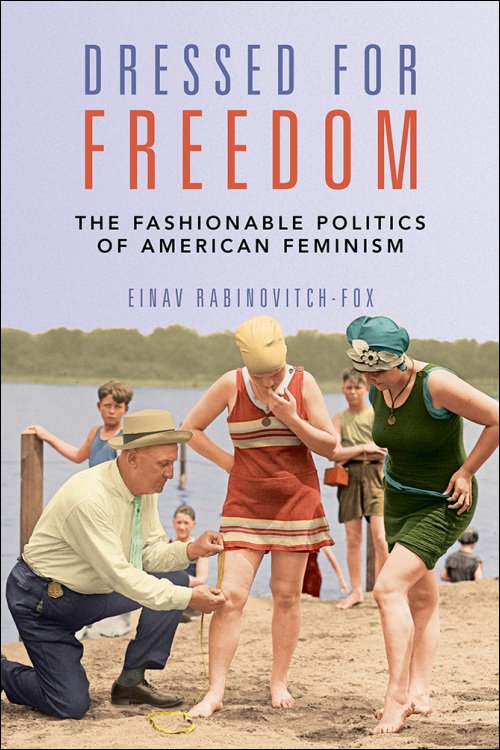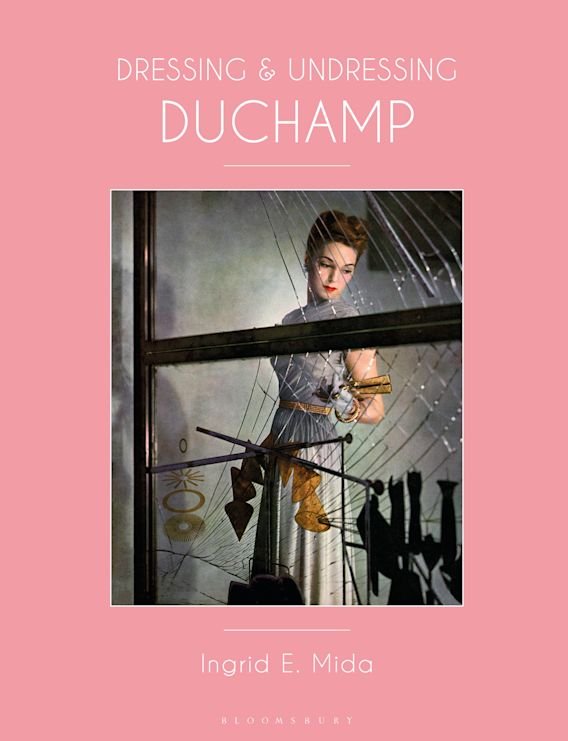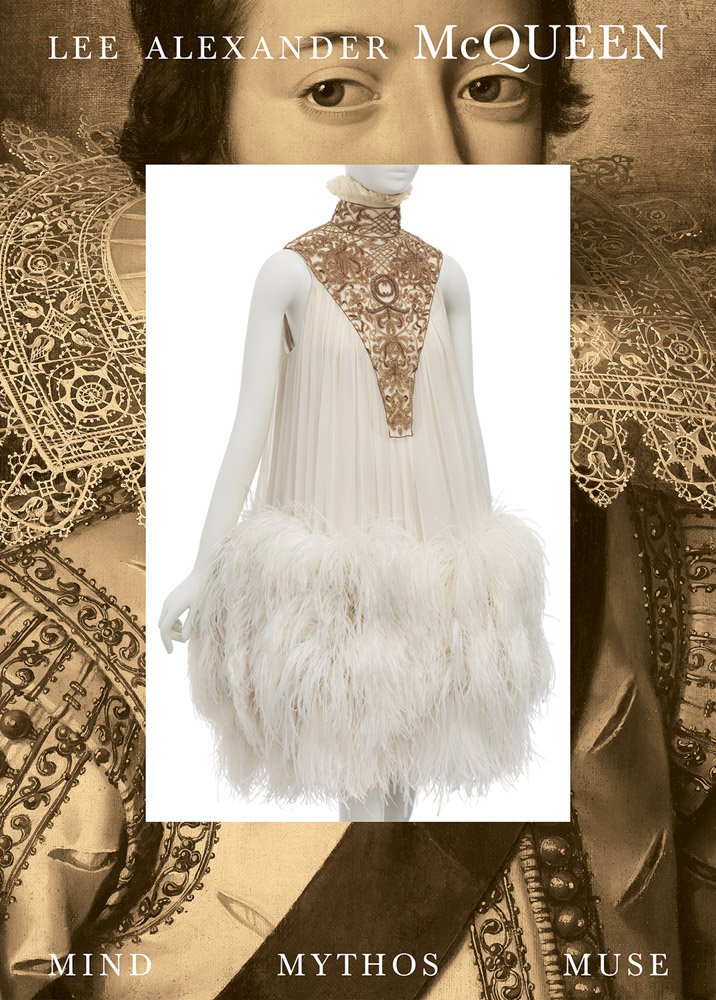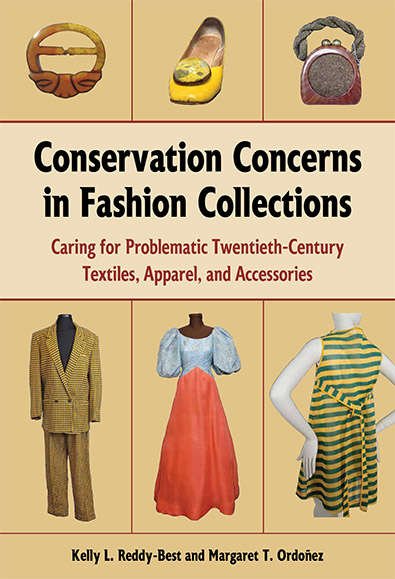I once again had the pleasure of reviewing the books nominated for the Costume Society of America’s Millia Davenport Publication Award. The award “recognizes and promotes excellence in the publication of costume, dress, appearance, and fashion related scholarship. The award is given annually to a newly published book or exhibition catalogue that makes a significant contribution to the above studies, reflects original thought and exceptional creativity, and draws on appropriate research methods and techniques. . . . The award, is named in honor of Millia Davenport (1895-1992), noted costume scholar, theatre designer, and founding member of the Costume Society of America. Her theatre work brought her international acclaim. She established and catalogued the library at the American Folk Art Museum. Her major published work, The Book of Costume (1948), was a pioneering visual history of Western fashion from ancient civilizations through the late nineteenth century.”
The reviewing was particularly exciting, and challenging, this year because there was an unusually large number of nominations. Whereas last year there were five books to review this year there were ten nominees. The nominated books were:
Frankie Welch's Americana: Fashion, Scarves, and Politics by Ashley Callahan
Patrick Kelly: Runway of Love by Dilys Blum.
Dressing Up: The Women Who Influenced French Fashion by Elizabeth L. Block
Dressing and Undressing Duchamp by Ingrid E. Mida
Guo Pei: Couture Fantasy by Jill D’Alessandro, Anna Grasskamp, Sally Yu Leung, and Juanjuan Wu
Lee Alexander McQueen: Mind, Mythos, Muse by Clarissa M. Esguerra and Michaela Hansen
Dressed for Freedom: The Fashionable Politics of American Feminism by Einav Rabinovitch-Fox
The winner of the 2023 award is Frankie Welch's Americana by Ashley Callaghan!
Frankie Welch's Americana is a truly outstanding publication. The author’s two previous books, on Ilonka and Mariszka Karasz, respectively, sit on my own bookshelves, so I knew of her excellence in choice of subject and explication. Frankie Welch was quite prolific but is not widely known. The textile and fashion designer and retailer worked outside of the fashion capitals and is best known in the nation's capital for her Alexandria, Virginia, boutique and her patriotic and politically themed scarves. The author has made significant contributions to fashion history with her previous books on Ilonka and Mariska Karasz and continues her examination of underrecognized designer/entrepreneurs with Frankie Welch's Americana. Every aspect of the book exhibits excellence from the writing to the illustrations, the graphic design and the exhaustive thoroughness with which the subject is treated. An example of the latter is the appendix listing the many scarves that Welch designed for hundreds and hundreds of entities and institutions. Welch’s entrepreneurial spirit and business skills are examined, making this an excellent contribution to the history of the fashion business. Welch’s interactions with politicians and their wives, including first ladies is well documented making the book of interest to students of politics and national history. Frankie Welch was part Native-American and her Cherokee alphabet scarf made a contribution to increased consciousness of Native culture. The book contributes to Native American studies in this regard. All together this was a superb nominee and most qualified for the Millia Davenport award.
I paid close attention to contemporary fashion in the years that Patrick Kelly was active. I observed his work at that time and felt that he was a minor talent–Dilys Blum’s monograph on the designer, Patrick Kelly - Runway of Love changed my mind and was recognized with a Davenport Award Honorable Mention. Kelly's delightful designs achieved much with a minimum of means and effort and his oeuvre has a pleasing coherence of image and message. This publication has an outstanding balance of text and illustrations. The beautiful original photographs of dressed mannequins are well complemented by documentary photographs of the designer’s world and topped off by the exuberant photographs by Oliviero Toscani for Kelly’s advertising campaigns. The design of the book perfectly suits Kelly’s bright, bold and basic aesthetic. The essays, by a number of scholars, are erudite and informative. Dilys Blum’s essay crucially contextualizes Kelly’s designs within the Paris fashion scene, where he worked. Sequoia Barnes article is an in-depth look into one sensational fashion performance that occurred in the finale of Kelly's fall winter 1986-87 fashion show, when the designer dressed Pat Cleveland as Josephine Baker. African-Americana is a recurring theme in the designer’s work and was treated by him in a way that might be controversial today. The essay by Madison Moore admirably addresses this aspect of Kelly’s work. Personal reminiscences by a number of friends of the designer, including the late great Andre Leon Talley, round out the picture. Altogether a first-rate production.
Dressing & Undressing Duchamp by Ingrid Meda may help Duchamp students understand fashion and it may help fashion students understand Duchamp, although the latter is less likely, not because fashion folk are less intelligent but because the author does not make Duchamp too much more intelligible than he currently is to a broader segment of the cultural community. It is remarkable that Duchamp scholars (which the author notes are numerous) have not examined the artist’s connection with clothes and fashion given that his leading contribution to art is the “readymade” a corollary to fashion’s pret-a-porter or ready-to-wear, which began as less expensive analogues to haute-couture. Duchamp's development of the "readymade" in 1913 placed him far outside the conventions of even avantgarde practice at that time. Dissatisfied with the rationality of his own cubist painting and its geometric analyses of conventional stilllife and figural subjects, Duchamp began to paint imaginary mechanical inventions. He then created a proto-readymade by mounting a bicycle wheel on a stool, producing a work of art with minimal formal intervention. Going a step further he applied his signature to an iron rack for drying bottles (1914) and then to a common snow shovel (1915) and declared them sculptures. Duchamp's unconventional act of creation suggested that an intellectual gesture, rather than a physical gesture, could be the basis of a work of art. The progression of Duchamp's strategies reveal a link between the industrial artifact and the dissolution of authorship as an authenticating mark for a work of art or design. These strategies would have a profound influence on 20th century art, especially on Surrealism and the development of pop art. The first chapter, on Duchamp’s early figurative drawings some akin to fashion illustrations, reveals a little known aspect of the artist's oeuvre. Chapter 3 examines Duchamp’s intersections with fashion, dress and identity including advertising, perfume, cross-dressing, the garconne, and gives credit to Duchamp's several female influences and collaborators, Florine Stettheimer, Berenice Abbot, Clara Tice. Chapter 5, In which the author attempts to apply Duchamp's concept of the readymade in the context of fashion museum exhibitions is least persuasive and least necessary. An excellent book, nicely designed and documented. A significant contribution to Duchamp studies, a much less significant contribution to fashion studies.
Like Paul Poiret, Guo Pei can be credibly accused of being merely a costumier. Unlike Poiret she has not made any contribution to modern fashion other than being a designer of lavish and often outlandish clothes for celebrities to wear on the red carpet (exemplified by the yellow gown with absurd pancake train resembling a giant omelet that Rihanna wore to the “Met Gala” in 2015). I am here to judge the book not the designer and Guo Pei: Couture Fantasy by Jill D’Alessandro, et al., is beautifully produced and illustrated with outstanding photographs, including many close-ups of the intricate embroidery adorning the clothes. The original photographs are the primary content although there are interesting essays by a variety of distinguished contributors. The essay by Juanjuan Wu, on the recent history of fashion in China, is highly informative and is well complimented by Sally Yu Leung’s on traditional Chinese motifs in Guo Pei’s work. The lead essay by Jill D’Allesandro is equal parts biography and hagiography.
Red White and Blue on the Runway: the 1968 White House Fashion Show and the Politics of American Style, by Kimberly Chrisman-Campbell, is a delightful and significant book that will be of interest to fellow scholars and students as well as lay people; the former will enjoy the meticulous recounting of an important but ephemeral event that quickly vanished from memory; the latter will appreciate its accessibility and two ever-popular subjects: fashion and politics. The fleeting nature of the 1968 White House fashion show that the book documents is what makes the subject so significant. The author had the distinct advantage of access to a trove of documentation in the Lyndon Baines Johnson Presidential Library as well as the archives of several of the fashion designers and editors who participated. These resources are woven together into a lively text that is complimented by a beautifully balanced selection of images of the event itself, associated ephemera, portraits of personalities involved and the clothes themselves, by designers including Chester Weinberg, Geoffrey Beene, Pauline Trigere, Adolfo, Bill Blass, Rudi Gernreich and George Stavropoulos (Lady Bird Johnson’s favorite designer, and the subject of my essay in the St. James Encyclopedia of Fashion) and many other names not as well known today. One wishes there were more illustrations of the clothes themselves, but there is enough to give a picture of what was going on in American fashion in 1968. The bibliography itself is fascinating and the index is an exemplary feature that is sadly disappearing in the publication world.
Elizabeth L. Block’s Dressing Up: The Women Who Influenced French Fashion is beautifully designed and illustrated. It has the best characteristics of a scholarly work and a coffee table book, respectively: a well-researched and informed text that is accessible to a range of readers and beautiful color illustrations in a very attractively designed book. Although French late 19th century fashion has been well studied Dressing Up can be seen as a significant contribution to the study of the American Gilded Age. The author is occasionally bogged down in intellectualisms. The bibliography is organized alphabetically with no distinction between primary and secondary sources–a chronological organization would have been more suitable. Altogether a handsome production that will certainly be found in many museum bookstores.
Prêt-à-Porter, Paris and Women: A Cultural Study of French Readymade Fashion, 1945-68 by Alexis Romano is truly an outstanding work of scholarship amongst the nominees. This “first critical history of French readymade fashion” is a close examination of an aspect of fashion history that has been clouded by the dominance of the haute couture. The author’s begins her study in the post-war period, well before previous accounts that gave credit to Emanuelle Kahn, Michele Rosier, Daniel Hechter and Chloe with the innovation of ready-to-wear. The author gives full acknowledgement to those designers as well: her identification of stylisme as a new conception of design in the 1960s is significant. The excellent writing is dense but highly intelligent and intelligible. The many color and black-and-white photographs are of enormous value to the intellectual arguments and contribute to a handsomely produced book. The beautifully organized bibliography is a joy to peruse.
Conservation Concerns in Fashion Collections: Caring for Problematic Twentieth-Century Textiles, Apparel, and Accessories by Kelly L. Reddy-Best and Margaret T. Ordoñez: although this publication is directed towards those responsible for the technology of conserving fashion and textile collections it will be of equal interest to those doing historical, industrial and business research, as the authors include historical background of each problematic material examined. This remarkable historical research was conducted using early textile science textbooks, trade journals, conservation references, and bulletins from trade associations. The historical material is arranged as narrative, as chronologies and in an appendix. Period photographs also support the historical background and are complimented by many technical illustrations. Well known fibers are included such as rayon and acrylic but the appendix gives exhaustive chronological lists of the trade names with which they were marketed by different manufacturers: Avisco, Celanese, Skenandoa, Zantrel and many more. If you ever wondered what Dacron, Dynel and Qiana were made of and all about this book will tell you. An outstanding contribution the conservation literature.
Einav Rabinovitch-Fox explains that “Dressed for Freedom examines the multiple ways that women engaged with fashion during the long 20th century, in order to challenge the enduring myth that a commitment to women's freedom and rights was incompatible with adornment practices and adherence to fashion.” The apparent dichotomy - fashion vs feminism - is indeed shown to be a myth, but one that gained credence in the women's liberation movement of the 1960s. The chapter on the 1960s and 70s is thus especially welcome and most fascinating. The 1980s and 90s are notably absent from the chronological examination, a significant absence given that, as I wrote in my essay on Dorothee Bis in Contemporary Fashion “in the 1980s with the rise of conservatism in culture and politics there was a return to conventionally body revealing fashions; many women began to feel that in their adherence to orthodox feminism they had abdicated the power inherent in their sexuality and sought to regain that sense of power through their dress.” The writing throughout is clear, flows nicely and is free from jargon and excesses of critical theory, making it accessible to both the serious and casual student of fashion and feminism. An excellent mix of sources is referenced in the footnotes. Dressed for Freedom: The Fashionable Politics of American Feminism is a wonderful book but the sparseness of its black and white illustrations prevent it from rising to the level of an award winner. Nevertheless it is a valuable addition to the literature of feminist studies.
Lee Alexander McQueen: Mind, Mythos, Muse by Clarissa M. Esguerra and Michaela Hansen is a beautiful book to look at, but upon first glance something seems missing. Two things that are definitely missing are a bibliography and an index, both of which are required to win the Davenport award. Coherence is also missing in this achronological treatment. The catalogue documents the collection of McQueen clothes generously given to the Los Angeles County Museum of Art by Regina J. Drucker. I’m sure the donor has a flair for fashion but the selection of garments is subjective and spotty, with as many insignificant examples as masterpieces. Each garment illustrated is paired with a work of art from LACMA’s collection, highlighting inspiration and correspondence from the history of art and design: “exploring imagination, artistic process and innovation in fashion and art, Lee Alexander McQueen Mind Mythos Muse reconsiders the designer's well-documented oeuvre by contextualizing select McQueen designs within art history. . . . Curators have interpreted and contextualized McQueen's work to highlight the cycles of inspiration and Imagination that are at the heart of all art.” The works of art shown beside the garments are described in entries written by curators from throughout the museum, a most welcome incidence of cross-disciplinary scholarship. This book joins at least 8 previously published books on the designer. While this publication makes its own slight contribution to the now voluminous literature on the designer, the existence of so much prior scholarship and biography renders this new addition insignificant in the overall picture.
The deadline for the 2024 Millia Davenport Publication Award approaches: October 15, 2023. Find out more about the nomination process: https://www.costumesocietyamerica.com/millia-davenport-publications-award
